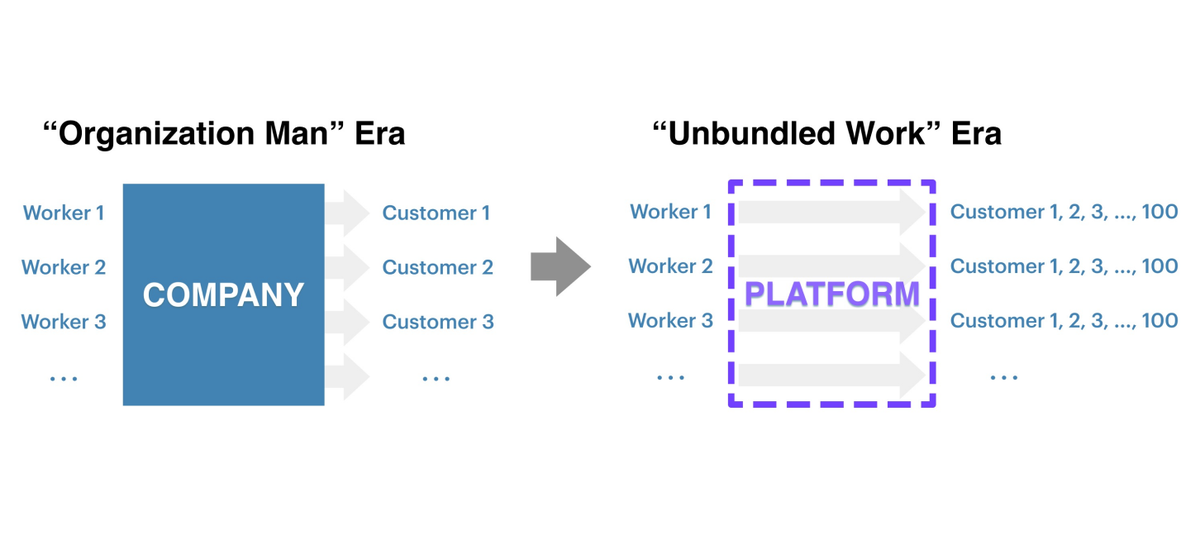
In the past few weeks, @lilashroff and I have spent *many* hours both watching + making TikToks.
The end result: 14K+ followers in 2 weeks, and learnings about how startups should leverage the platform, which we wrote up in this blog post 👇
li-jin.co/2021/01/27/we-…
The end result: 14K+ followers in 2 weeks, and learnings about how startups should leverage the platform, which we wrote up in this blog post 👇
li-jin.co/2021/01/27/we-…
It's clear that businesses that figure out how to leverage TikTok will have an advantage in cultivating user trust and efficiently acquiring customers.
As of mid-2020, TikTok had 50M daily actives in the US. Businesses—from solopreneurs to public companies—have seen success.
As of mid-2020, TikTok had 50M daily actives in the US. Businesses—from solopreneurs to public companies—have seen success.
Excitingly for startups, TikTok is designed with a more level playing field on which newcomers can succeed.
TikTok’s FYP purposefully surfaces videos from even little-known accounts. That means startups can create content that quickly grows.
TikTok’s FYP purposefully surfaces videos from even little-known accounts. That means startups can create content that quickly grows.
There are a few areas where TikTok really excels for startups:
1. Building user trust and buy-in
2. Driving awareness of new products and services
3. Creating buzz around a category
4. Getting user feedback and creating a two-way dialogue
1. Building user trust and buy-in
2. Driving awareness of new products and services
3. Creating buzz around a category
4. Getting user feedback and creating a two-way dialogue
1. Building user trust and buy-in
Because TikTok is video-based, it’s naturally conducive to storytelling instead of simply shilling products. Showing authenticity, excitement, and passion can help make users feel bought into your success and want to support your journey.
Because TikTok is video-based, it’s naturally conducive to storytelling instead of simply shilling products. Showing authenticity, excitement, and passion can help make users feel bought into your success and want to support your journey.
Examples: @monetdating, @tabtabapp, Flox
tiktok.com/@joanna.shan/v…
tiktok.com/@victordanielc…
tiktok.com/@flox.app/vide…
tiktok.com/@joanna.shan/v…
tiktok.com/@victordanielc…
tiktok.com/@flox.app/vide…
2. Driving awareness of new products and services
From our own survey of 150 Gen Zers, over half of TikTok users have downloaded an app or visited a website they discovered through the app, and more than one-third have purchased a product.
From our own survey of 150 Gen Zers, over half of TikTok users have downloaded an app or visited a website they discovered through the app, and more than one-third have purchased a product.
Companies can use TikTok to show off their products in a way that doesn’t feel overly commercial or transactional. Think: cool demo videos, product walk-throughs, tutorials.
Examples - @usehonk, @breathwrk, @aavia_io
tiktok.com/@usehonk/video…
tiktok.com/@breathwrk/vid…
tiktok.com/@aavia.io/vide…
tiktok.com/@usehonk/video…
tiktok.com/@breathwrk/vid…
tiktok.com/@aavia.io/vide…
3. Creating buzz around a category
TikTok’s algorithm surfaces content, however niche, that users may find interesting. That means it’s a great place to create buzz around an entire category or educate users regarding a certain topic.
TikTok’s algorithm surfaces content, however niche, that users may find interesting. That means it’s a great place to create buzz around an entire category or educate users regarding a certain topic.
Once users are interested in your category, companies can suggest related products/services that users are likely to be interested in.
Examples: @pricelesstayy, @bysandylin, @tryplugd, @chris__lu @PaulYacoubian
tiktok.com/@get.plugd/vid…
tiktok.com/@copy.ai/video…
Examples: @pricelesstayy, @bysandylin, @tryplugd, @chris__lu @PaulYacoubian
tiktok.com/@get.plugd/vid…
tiktok.com/@copy.ai/video…
4. Getting user feedback and creating a two-way dialogue
Creating content on TikTok is a great lightweight way to test ideas. Before even building out a product, startups can gauge reception to a concept via TikTok.
Creating content on TikTok is a great lightweight way to test ideas. Before even building out a product, startups can gauge reception to a concept via TikTok.
Check out more examples in the post & all the amazing community responses here:
https://twitter.com/ljin18/status/1343699470358294528
And if this is intriguing and you’d like to tap into TikTok for your brand/startup but don't know where to start, join our network!
Fill out our form and we’ll share the creator directory with you: airtable.com/shrOVjnPgUFWSl…
Fill out our form and we’ll share the creator directory with you: airtable.com/shrOVjnPgUFWSl…
If you’re a creator looking for opportunities to work with startups/brands, fill out this form and we’ll share your profile! airtable.com/shrL2zwMQm48oB…
Questions? Comments? Experiences to share? We're chatting about this tonight at 7pm ET / 4pm PT on @joinClubhouse!
@bysandylin @pricelesstayy @chris__lu @blondgoblin @LilaShroff
joinclubhouse.com/event/VmJwrJnP
@bysandylin @pricelesstayy @chris__lu @blondgoblin @LilaShroff
joinclubhouse.com/event/VmJwrJnP
• • •
Missing some Tweet in this thread? You can try to
force a refresh



